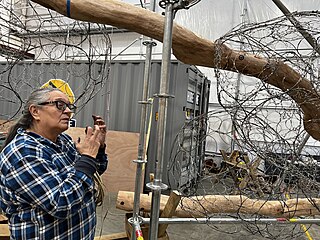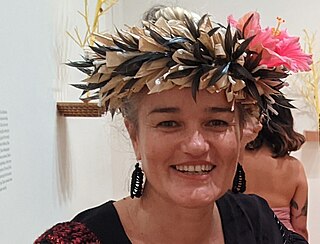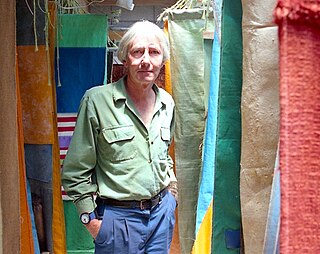
Shona Rapira Davies is a New Zealand sculptor and painter of Ngātiwai ki Aotea tribal descent currently residing in Wellington, New Zealand.

Michael Duncan Smither is a New Zealand painter and composer.

Andrew Drummond is a New Zealand painter and sculptor. He attended University of Waterloo in Canada, graduating in 1976. He was a Frances Hodgkins Fellow in 1980.
Dame Cheryll Beatrice Sotheran was a New Zealand museum professional. She was the founding chief executive of the Museum of New Zealand Te Papa Tongarewa and was credited with the successful completion of the museum, considered the largest international museum project of the 1990s.

Shigeyuki "Yuki" Kihara is an interdisciplinary artist of Japanese and Samoan descent. In 2008, her work was the subject of a solo exhibition at the Metropolitan Museum of Art in New York; it was the first time a New Zealander and the first time a Pacific Islander had a solo show at the institution. Titled Shigeyuki Kihara: Living Photographs, the exhibition opened from 7 October 2008 to 1 February 2009. Kihara's self-portrait photographs in the exhibitions included nudes in poses that portrayed colonial images of Polynesian people as sexual objects. Her exhibition was followed by an acquisition of Kihara's work for the museum's collection.

Fiona Dorothy Pardington is a New Zealand artist, her principal medium being photography.
Jacqueline Fraser is a New Zealand artist of Ngāi Tahu descent.

Ani O'Neill is a New Zealand artist of Cook Island and Irish descent. She has been described by art historian Karen Stevenson as one of the core members of a group of artists of Pasifika descent who brought contemporary Pacific art to "national prominence and international acceptance".

Maureen Robin Lander is a New Zealand weaver, multimedia installation artist and academic. Lander is of Ngāpuhi and Pākehā descent and is a well-respected and significant artist who since 1986 has exhibited, photographed, written and taught Māori art. She continues to produce and exhibit work as well as attend residencies and symposia both nationally and internationally.

Rachael Rakena is a New Zealand artist.
This is a timeline of the feminist art movement in New Zealand. It lists important figures, collectives, publications, exhibitions and moments that have contributed to discussion and development of the movement. For the indigenous Māori population, the emergence of the feminist art movement broadly coincided with the emergence of Māori Renaissance.
Ann Shelton is a New Zealand photographer and academic.
Mary McIntyre is a New Zealand artist. Her works are included in major art collections in New Zealand and Australia.
Nicola Jackson is a New Zealand artist, born in Dunedin.
Megan Lillian Jenkinson is a New Zealand photographer.
Merylyn Tweedie is a multi-media artist from New Zealand. In 2004 she won the Walters Prize, New Zealand's largest contemporary art prize, and in 2003 her work was selected to represent New Zealand at the Venice Biennale.

Luise Fong is a Malaysian-born New Zealand artist.

Donald Sinclair Driver (1930–2011) was a New Zealand artist born in Hastings. Driver was self-taught and worked in a variety of media including painting, sculpture, collage and assemblage. His work was often recognized for its use of everyday or vernacular materials.
Denise Kum is a New Zealand artist. Her works are held in the collection of Auckland Art Gallery Toi o Tāmaki, Museum of New Zealand Te Papa Tongarewa, and the University of Auckland art collection.










